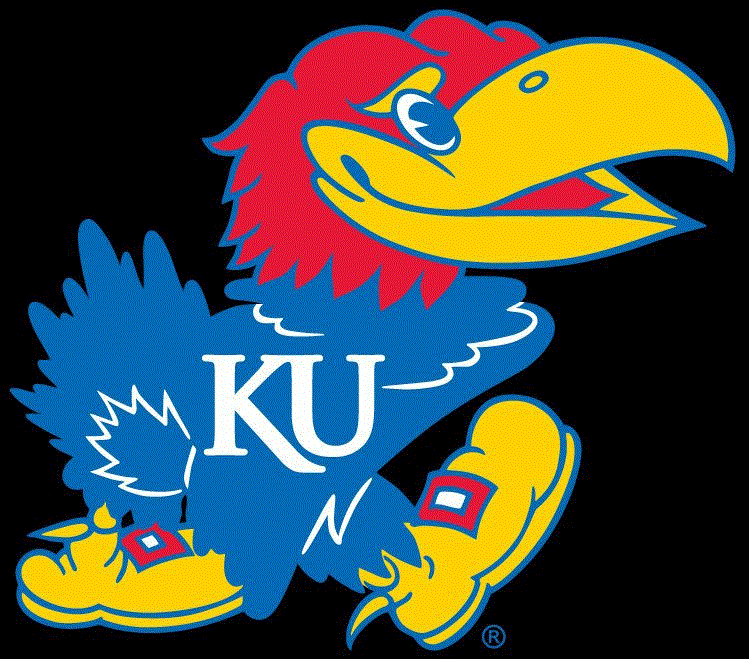 |
University of Kansas
Electrical Engineering & Computer Science |
EECS 563 - Introduction to Communications Networks - Fall 2019
Announcements:
Please submit a paper copy of project 5; it can be turned in to me in my office before 4:00 on 12/19 (I plan on being in the office on 12/19) or the EECS office by 4:00 on 12/19.
_______________________________________________________
- In class review for Test 2: Tuesday December 3
- Open review session: Wednesday December 4; 5:30 - 7:00 pm in Learned Hall 2112
- Test 2: Thrusday December 5
_________________________________________________________________
- In class review for Test 1: Thursday October 17
- Open review session: Monday October 21 5:30 - 7:00 pm LEEP 2420
- Test 1: Tuesday October 22
_________________________________________________________________
________________________________________________
Interactive Plots Demonstrating System Trade-offs
- Performace analysis: statistical multiplexer-infinite system
- Performance analysis: statistical multiplexer-finite system
- Performance analysis: multi-server system
- Throughput vs Offered Load for Finite System
- Shortest Path through Network
- Simplified Token Ring Maximum Normalized Throughput Analysis
- Maximum Normalized Throughput for CSMA-CD Networks
- Stop & Wait Efficiency Trade-offs
- Sliding Window Efficiency Trade-offs
______________________________________
At the conclusion of this class the students are expected to be able to:
- Understand the basics of multiplexing, e.g., statistical multiplexing
- Understand the layered structure of protocols
- Understand the importance of standards and who sets them
- Understand the basics of network protocols, including, datagram/virtual circuit switching/forwarding, access control, data link control and, IP, transport (TCP & UDP).
- Understand the tradeoffs involved in network design in a variety of environments - LAN and WAN, diverse link rates, and varied error and delay conditions
- Perform simple analytic performance and design trade-off studies
- Perform simulation-based performance and design trade-off studies
- Understand the basics of network security, including public/private key systems, digital signatures, key distribution systems, and certificate authorities
- Use network analysis tools, e.g., Wireshark , traceroute , ping, and simulation (ExtendSim)
- Be fluent in the language of communication networks, i.e., understand the meaning of networking terms and abbreviations
________________________________________
Formats and Guidelines for Assignments
If you may submit any assignment by e-mail;
1) send to the grader and cc vsfrost@ku.edu;
2) name your file: Assignment#_your-name, e.g., HW5_Frost.pdf or Project1_Frost.pdf
________________________________________
Reference Material
IPv4 Address Tools
- National Broadband Map
- Radio fundamentals for cellular networks: White paper
- Curiosity Rover Communications -- Interplanetary Network
- Video of Curiosity Rover First Image and Landing Timeline and Time for first Image and Mars Geocentric Distance
- COMMUNICATION DELAY -- Mars and others
- UCLA, Cisco & more join forces to replace TCP/IP
- What Everyone Gets Wrong in the Debate Over Net Neutrality, Wired, By Robert McMillan
- The Global Internet Is Being Attacked by Sharks
- OSI: The Internet That Wasn't: How TCP/IP eclipsed the Open Systems Interconnection standards to become the global protocol for computer networking
- Introduction to Industrial Control Networks,
Galloway, B. ; Hancke, G.P. Communications Surveys & Tutorials, IEEE, Volume:15 , Issue: 2, Second Quarter 2013
________________________________________
Some interesting on-line networking related videos:
________________________________________
- Advice
on Writing
- Most colleges and universities have a writing center, a place for students
to talk about their writing with trained peer consultants. At KU see the KU Writing Center.
________________________________________
Academic Integrity and Plagiarism
The department, school and university have very strict guidelines regarding
academic misconduct. Obviously, copying is not allowed on exams. Students are
expected to submit their own work on individual homework and projects. Lending
or borrowing all or part of a simulation model or program from another student
is not allowed. Students ARE allowed to borrow and modify any code on this class
web site in their projects. Instances of cheating will result in a referral
to the department chairman and the dean of engineering.
All sources in your written work (project reports) must be properly referenced;
if you use a source from the literature or the idea of another for your work
you must reference it. If you quote or copy a block of text, it must be cited
and included in quotation marks (if a sentence or less in length) or in block
quote style (if more than a sentence in length). If you paraphrase text (reword
a phrase, sentence, or paragraph), you must also quote or blockquote followed
by “[paraphrased]” in addition to proper citation. Figures taken
from other sources must be referenced.
I recommend that you take intermediate notes from which you write your own
words. I strongly recommend that you not write in one window while displaying
the work of others in another window; this is asking for trouble. “Unintentional”
paraphrasing is also not an acceptable excuse for academic misconduct.
Modified with permission from James P.G. Sterbenz http://www.ittc.ku.edu/~jpgs/courses/eecs800/
and John Gauch http://www.ittc.ku.edu/~jgauch/teaching/258.f03/syllabus.html
____________________________________________________________________________________________
Author
Victor S. Frost, frost@eecs.ku.edu

